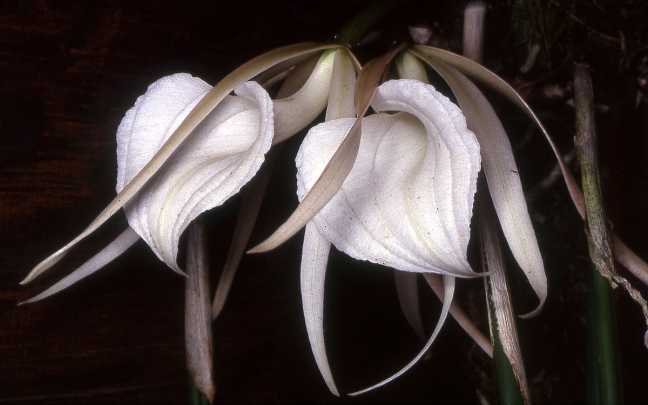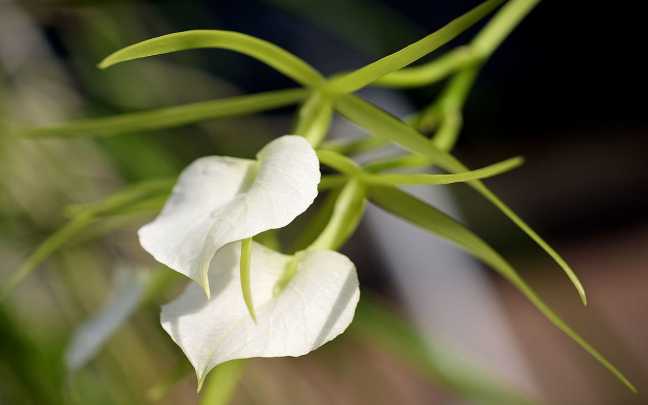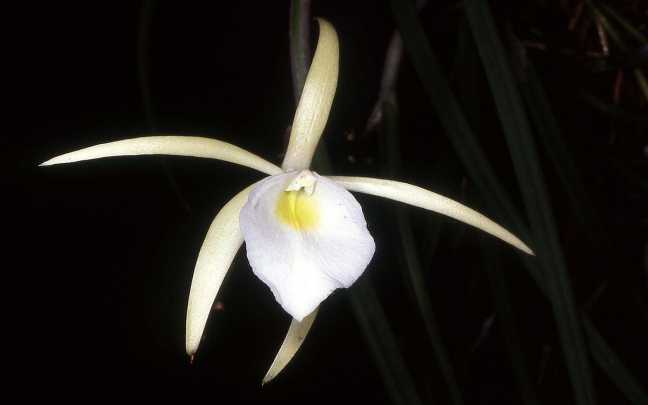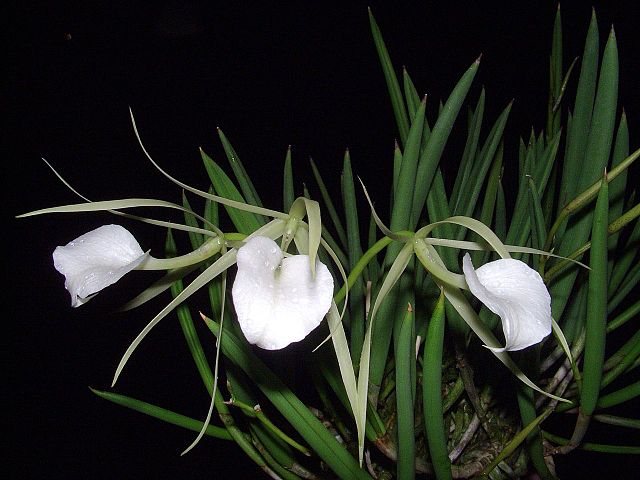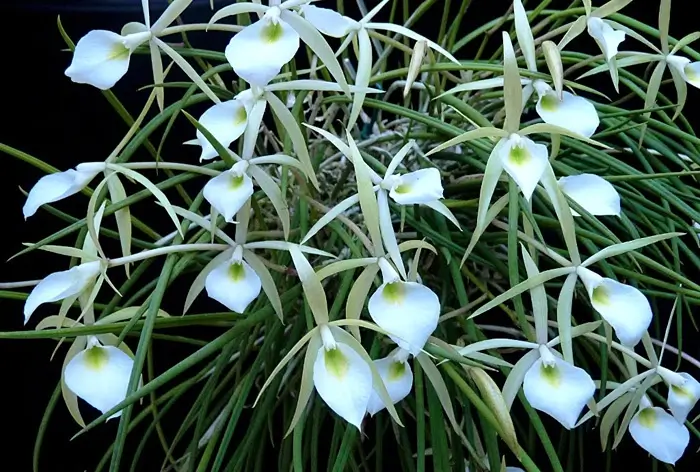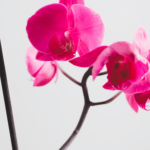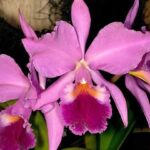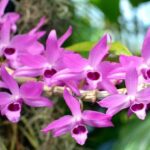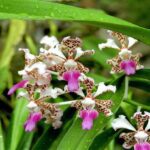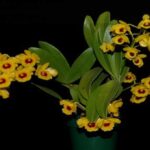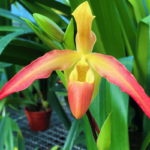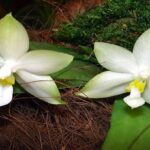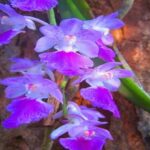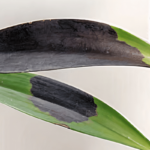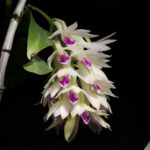Brassavola is a genus of epiphytic and rupicolous orchids that can be found in Central America and South America, comprising 23 species.
It was published in the year 1813 by the Scottish botanist Robert Brown, named in honor of the medicine professor Antonio Musa Brassavola.
They are very present, especially in 2 regions:
- Caribbean
- Brazil
And, in some cases, we can also find native Brassavola species in Mexico.
These plants live at altitudes ranging from sea level to 1800 meters.
Keep reading to learn about the main characteristics and how to care for Brassavola orchids.
Characteristics
One of the main characteristics of Brassavolas is their pseudobulbs, which are connected and also small.
Their leaves are tubular, which reduces water evaporation and makes them more drought-tolerant than other orchids.
Moreover, they share several features with Cattleya orchids, so much so that they are used to creating hybrids with Cattleyas.
Other curiosities include:
- They release their scent at night.
- They prefer lighting conditions similar to those of Cattleyas.
- They mainly bloom in summer.
- Most of their species have white flowers.
Why The Nickname Lady Of The Night?
The Brassavola is a genus of orchids that are known for their fragrant flowers that bloom at night.
The name “Lady of the night” is a reference to this habit of floration.
The orchid’s flowers are often white or pale pink, and they have a sweet, intoxicating fragrance.
How to Care for Brassavola Orchids
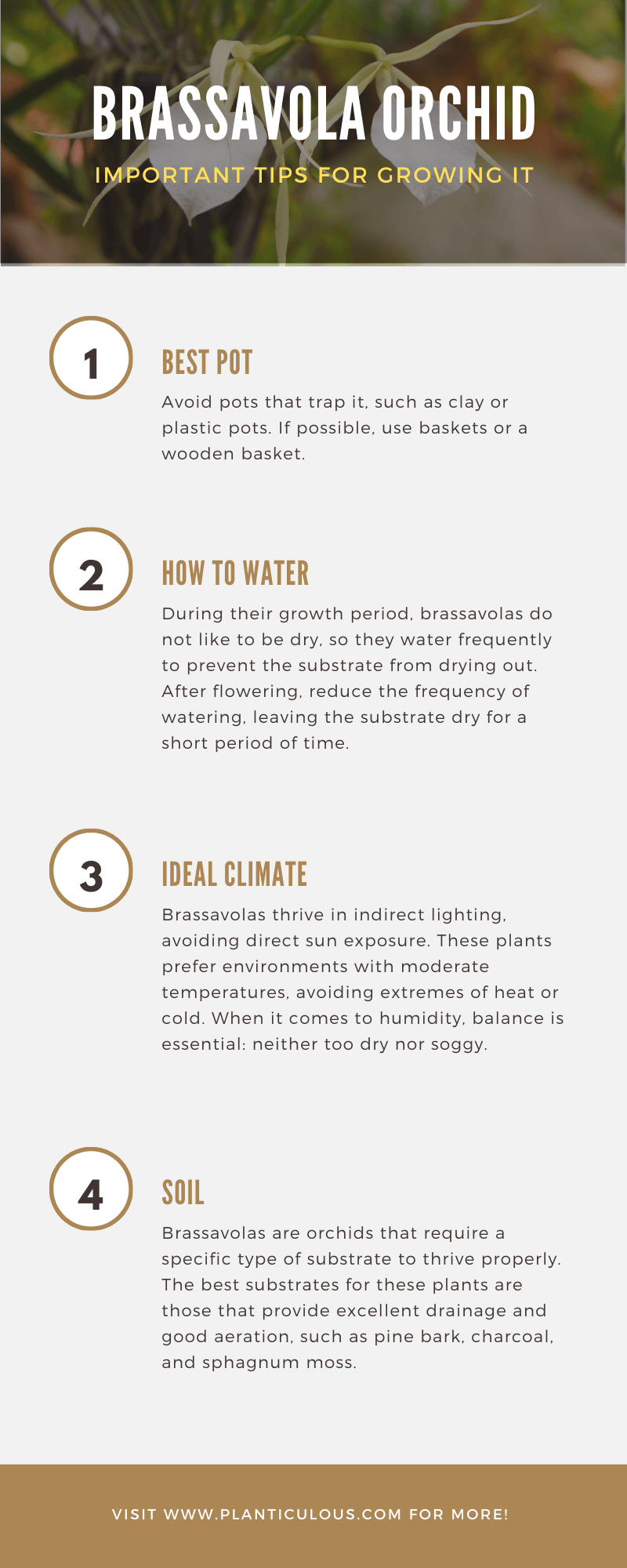
One of the great advantages of having a Brassavola orchid is that it is very easy to cultivate.
This is because, like moth orchids, they are considered an excellent orchid for growers who are still learning.
One of the main reasons for this “title” is their great resistance to drought, but they do not like to “stay thirsty.”
To take care of Brassavola, you should provide the following requirements to your plant:
- A pot that allows root growth.
- Water it when the roots turn gray or almost gray.
- Keep it at a temperature between 10ºC to 33ºC (50°F to 91.5°F).
- Well-draining soil.
- Light ventilation.
Keep reading, as below you will learn more about these care tips for your Brassavola.
What Pots to Use
Choosing an ideal pot for your Brassavola orchid is essential for caring for orchids. Here are some tips you should consider:
- Avoid pots that keep it restricted, such as clay or plastic pots.
- If possible, use baskets or wooden cachepots.
How to Water
During its growth period, Brassavolas do not like to dry out much, so water frequently, preventing the soil from drying out.
After flowering, reduce the frequency of watering, letting the soil dry out for a short period of time.
To check if you are watering correctly, just look at your orchid’s roots following the rules below:
- Healthy, green roots mean you are watering correctly.
- Roots turning gray or white indicate lack of water.
- Soft, musty-smelling roots mean you are overwatering.
Always check these signs to ensure there are no issues with watering your Brassavola orchid.
Optimal Lighting and Temperature
Like almost all epiphytic orchids, they prefer indirect light.
Usually, you can place them with Cattleyas, as the amount of light needed for both species is very similar.
Regarding temperature, do not let it exceed 33ºC (91.5°F) and do not go below 10ºC (50°F).
NOTE: they can tolerate more extreme temperatures, but for a short period of time.
Orchids give us some signs when they are receiving too much light or need more light.
In this case, let’s look at the following signs on the orchids’ leaves:
- If the leaf is dark green, it lacks light.
- If the leaf is more yellowish, it is receiving too much light.
To learn more about these signs that orchids offer us for cultivation, read the article spots on orchid leaves.
Soil, Humidity, and Ventilation
As they are orchids that love water, especially during the growth period, ensure the soil has good drainage.
Very draining substrates allow water to drain very easily. Sand, gravel, and pumice, among others, are draining elements because they do not retain water or retain very little. A soil that contains many draining elements will dry out very quickly. If the plant is not adapted to dry environments, it will quickly become thirsty and will need to be watered much more often.
Source: Planfor.pt
Some substrates with excellent drainage include:
- Gravel
- Charcoal
- Chopped Styrofoam
- Expanded clay
You may need to mix these substrates with others that do not drain as well to prevent the plant from drying out in a few minutes.
Test and check your roots from time to time to see if your watering is correct.
After that, comment below on which soil worked best for you.
Humidity and ventilation are very simple factors in the cultivation of Brassavola orchids.
Basically, the place should be pleasant, neither too dry nor too wet, and regarding ventilation, gentle winds with good airflow are ideal.
Main Species
As mentioned earlier, there are 23 Brassavola species.
Some are little known and are hardly sold, while others are well-known and famous among growers.
Below, I have listed the main Brassavola species, so you can learn more about this genus.
Brassavola tuberculata
Brassavola tuberculata is popularly known as rat-tail orchid.
It is native to several countries, such as:
- Bolivia
- Paraguay
- Brazil
Discovered in 1829, its flowers have pleasant scents, especially at night, and each flowering presents us with 2 flowers per stalk.
Its flowering occurs in early spring.
To cultivate your Brassavola tuberculata, follow these tips:
- High temperatures during summer, slightly lower in winter.
- Moderate humidity
- Water generously, but reduce during winter
- Fertilize every week
- Place it on tree trunks or wooden bark.
Brassavola nodosa
Another well-known plant of this genus, Brassavola nodosa, is known as the lady of the night.
It got this name because it releases a fragrance during the night.
Considered medium-sized, it is native to several countries in Central and South America, as well as Mexico.
Its flowers last an average of 20 to 30 days, and it is considered easy to cultivate.
To cultivate your Brassavola nodosa, follow these tips:
- High temperatures during the day, 24ºC to 29ºC (75 °F)
- Temperatures between 16ºC to 21ºC (61°F to 70°F) during the night
- Bright light (like Cattleyas)
- Water when the substrate dries out
- 50% to 70% humidity
Brassavola perrini
Brassavola perrini is very similar to tuberculata, making it very difficult to differentiate between the two species.
It is a Brazilian orchid, mainly found in Alagoas.
Regarding its flowers, they usually last about 20 days, with 3 or more flowers per stalk (this is the difference between it and Brassavola tuberculata).
Its cultivation is quite simple, and it blooms in spring.
To care for your Brassavola perrini, do the following:
- High light (maybe direct sun in winter)
- Well-draining substrate
- Water every day
- High humidity
- Fertilize with NPK 20-20-20 every 15 days
Brassavola martiana
Last but not least, Brassavola martiana.
This is an epiphytic orchid, mainly found in Brazil and other countries in South America.
They usually grow in tropical forests at altitudes ranging from 50 to 1000 meters (164 to 3280,84 feet).
Their flowers also have a slight fragrance and tend to appear between summer and autumn.
To cultivate them, follow these tips:
- Constant fertilization, except in winter months.
- Constant watering, also, should be reduced in winter.
- High light.
- Warm or medium temperature.
Conclusion – Brassavola Orchids
Unfortunately, Brassavola orchids are not well known around the world.
I hope that with this article, you have learned a little more about this genus and also become interested in having one.
If you want to learn more about orchids, you can access some of our articles:
- Phragmipedium Orchids
- 22 Brazilian Orchids You Probably Don’t Know
- Vanilla Orchid: How To Plant, Care and Grow (With Photos)
If you liked the article, share it on your social networks, as this helps promote this species to more people.
To do this, click on one of the icons below.

